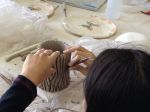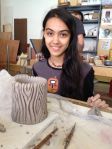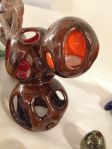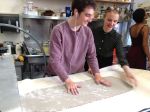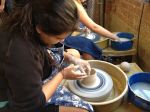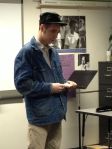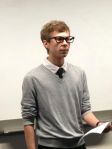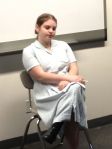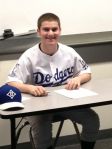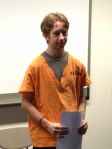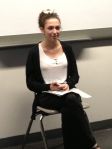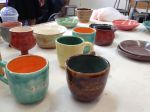 This year, Senior Institute visual arts teacher Sue Grieder decided to try an experiment with the advanced students in her elective ceramics class. Instead of requiring them to complete specific projects to demonstrate techniques they’ve learned, she focused solely on teaching techniques and then let her students decide how to apply them. Her goals: to give her students more opportunities to think creatively and solve design problems on their own.
This year, Senior Institute visual arts teacher Sue Grieder decided to try an experiment with the advanced students in her elective ceramics class. Instead of requiring them to complete specific projects to demonstrate techniques they’ve learned, she focused solely on teaching techniques and then let her students decide how to apply them. Her goals: to give her students more opportunities to think creatively and solve design problems on their own.
So during the 1st semester, students worked on small skill-building assignments including texturing, glazing, and pottery wheel work. Then, once they mastered the essential skills, Sue offered her students a menu of project choices in the 2nd semester. “I let students figure out what techniques would best suit the projects they chose to do,” Sue says.
The day I visit Sue’s ceramics class, her students are deeply engaged in applying these skills on their projects.
I notice 11th grader, Jennifer E., working on a piece of un-fired clay, which she’s shaping with a sculpting tool; it looks like a hollow section of a tree trunk that she tells me will become a pencil holder. She walks me through her creative process and the texturing techniques that she’s applying to this project. “First, I researched vases and other kinds of ceramic containers,” Jennifer says. “Then I studied various wood grains and practiced carving and incising to get the right look.”
Jennifer has worked on several projects over the past few months, practicing the various techniques she’s learned. She offers to show me some of them, and leads me out of the ceramics studio and into the school’s main hallway where a few dozen pieces of student work from Sue’s class are on display. A lantern she designed and built catches my eye. “I was inspired by the Japanese lanterns that we studied,” Jennifer explains. “It was really challenging to design and make. First semester, I’d learned how to use ceramic molds, so I thought I’d try it out by making a lantern. I crafted these hollow half-spheres and then put them together.” She also shows me her other work which she applied her skills to create—a ceramic box and a drinking cup.
Later, Sue shares with me her own inspiration for this change in her classroom practice. She was motivated by a book that every Wildwood teacher read this past summer—Tony Wagner’s Creating Innovators: The Making of Young People Who Will Change the World. Wagner, a professor at Harvard, believes three essential teaching characteristics that encourage innovative thinking: giving students work that taps into their interests and passions, provides them a purpose, and encourages play.
The results among Sue’s students beautifully illustrate Wagner’s point: the work is beautiful, whimsical, and technically sound. “The best part,” Sue says, “is that I’ve been able to be much more of an artistic ‘coach’ than the teacher; it’s inspired some students to explore techniques beyond those that were presented during the 1st semester, and has also resulted in greater success and pride in the final products.”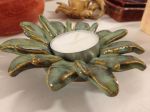
I test this observation as I check in with two other 11th graders, Sarah R. who is sculpting the underside of an unfired clay bowl, and Sophia R. who is at the beginning of her process in making a plate. I ask them what they’ve gotten better at doing since the start of the year. “I couldn’t even make a cup back in September,” Sophia says, “and I just finished making my own sushi serving set!” Sushi, it turns out, is one of Sophia’s personal passions. Sarah describes how regular practice at the pottery wheel has helped her to more efficiently craft bowls like the one she’s working on now. I ask her what she plans to do with her finished products from this year’s class. “I’m going to use them,” she says without hesitation. “I’m really proud of these.”
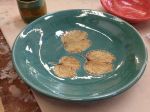 Pride in work, skill development, and feelings of accomplishment—all because a teacher coached her students, then trusted them to apply their skills in a meaningful way. With gentle guidance, and then, left to their own devices, Wildwood students think, experiment, and innovate. That’s the most invaluable outcome our community can claim.
Pride in work, skill development, and feelings of accomplishment—all because a teacher coached her students, then trusted them to apply their skills in a meaningful way. With gentle guidance, and then, left to their own devices, Wildwood students think, experiment, and innovate. That’s the most invaluable outcome our community can claim.
~ By Steve Barrett, Director of Outreach, Teaching, and Learning
